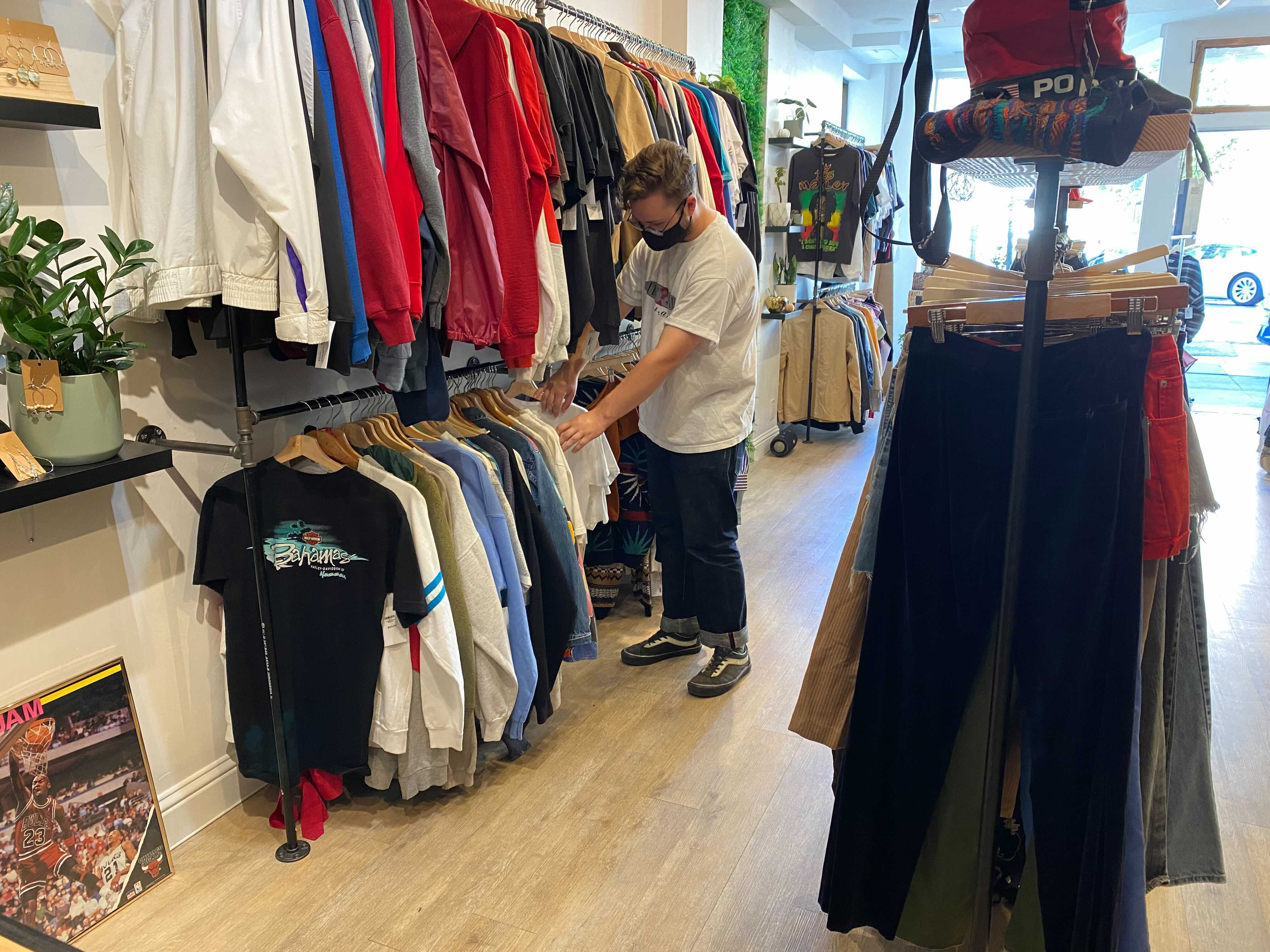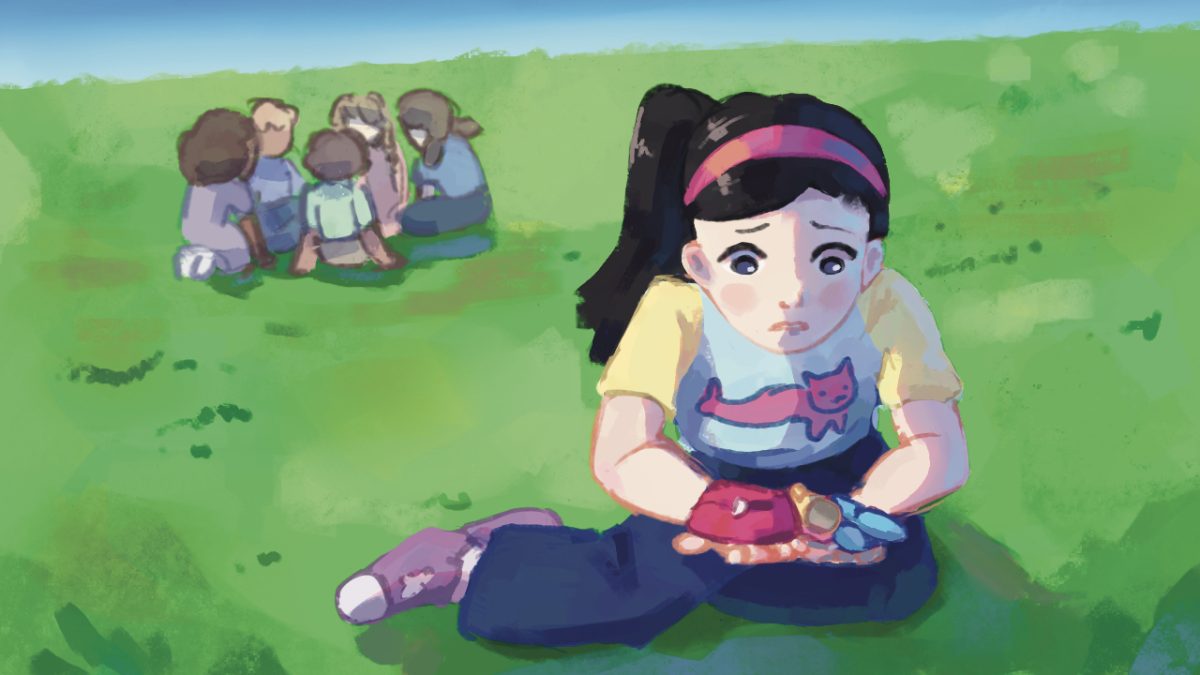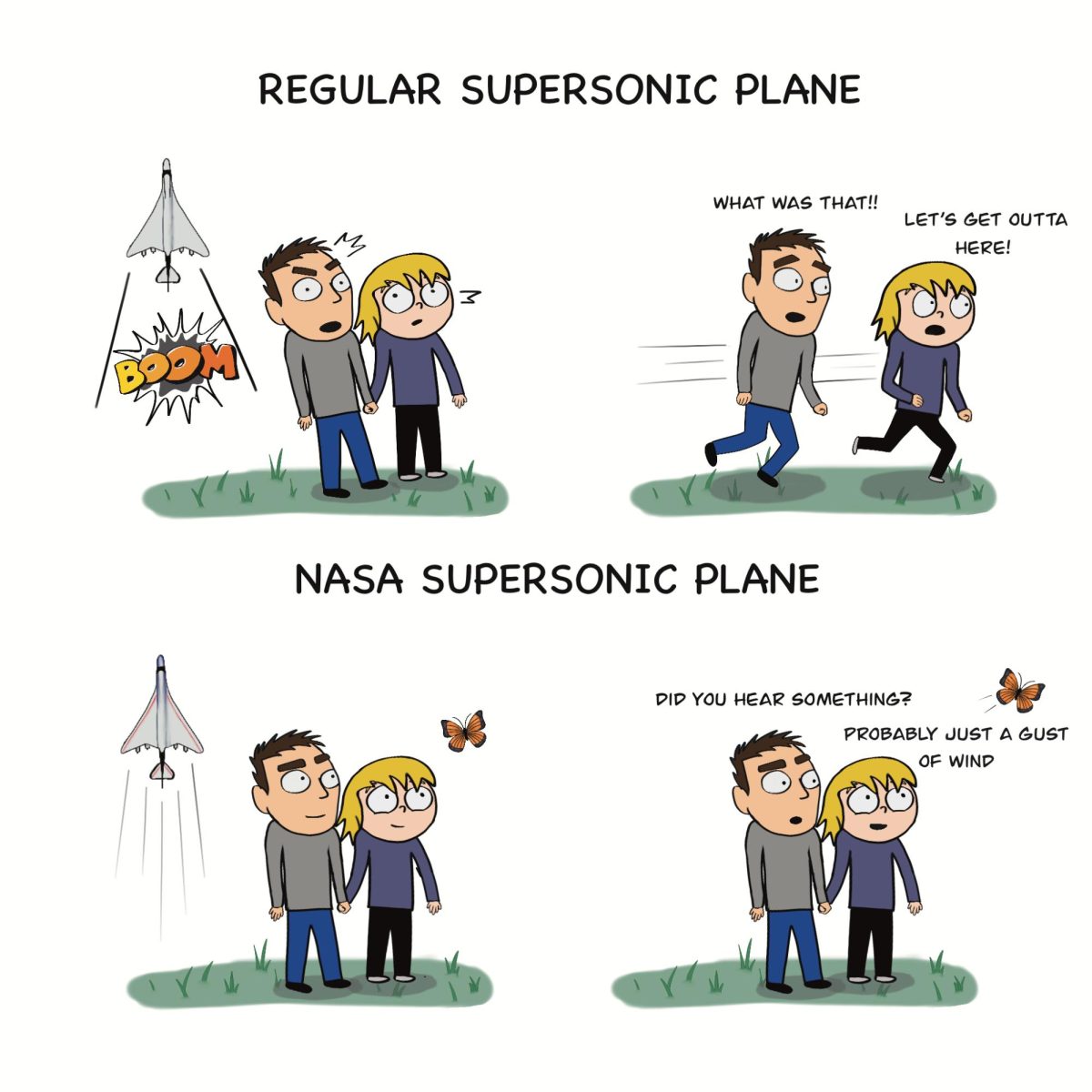One week after moving from Sweden to California, junior and Paly ECO president Lea Hadzic walked out of her house and was greeted by a blazing, orange sun and the smell of campfires. This moment was the first time she had experienced wildfires within 100 miles of her home, let alone an entire season of them. The bad air quality, coupled with having to stay inside for her safety, compelled Hadzic to do more research on climate change and the environment. Since this moment last year, she has taken initiative to help the environment by leading Paly’s only environmental club and changing her shopping habits.
“I’ve tried to cut back on online shopping, and I try to buy things in-store and recycled materials instead,” Hadzic said. “I want to emphasize the importance of individual action and how much of an impact it actually can have.”
Fashion industry profits grew steadily in 2019 at a rate of 4%, according to the McKinsey Global Fashion Index. Although this growth is celebrated within the industry, every aspect of fashion takes a toll on the Earth, AP Environmental Science teacher Alicia Szebert said.
“There’s a lot of pollution at every step –– the producing, the making and finally you purchasing it,” she said.
One way clothing creates pollution is through the use of plastics in fabric production. These plastics are broken down throughout the production process and form into microplastics.
“Microplastics are problematic because they’re present in our bloodstream, our water, our food systems and our soils,” Szebert said. “Plastics are an unnatural substance that are going to affect how our organs function. The body of any animal that is eating plastic doesn’t know how to process it because it’s an unnatural substance, so it doesn’t pass through the system naturally.”
In addition to microplastics, the fashion industry’s use of chemicals to create properties such as flame retardancy or wrinkle resistance harms the environment by polluting water sources.
“Dyes and chemicals stay in the fabric and get washed into the environment through many iterations of the manufacturing process,” Szebert said. “Also, while you are doing laundry, you are washing them out into natural systems, which is damaging and problematic.”
While the industry is polluting the atmosphere and water, it also creates an abundance of waste which piles up in landfills. In 2018, the United States produced 17 million tons of textile waste, according to the Environmental Protection Agency.
“The (industry is) doing all these interesting things which are creating some cool types of fabrics, but if it’s an unnatural product and isn’t being recycled, it’s ending up in landfills and won’t biodegrade versus natural substances,” Szebert said.
With the rise of online shopping’s popularity, the transportation of clothing is becoming more of a problem too, Hadzic said. Transportation accounts for 29% of the United States’ greenhouse gas emissions, according to the EPA, making it the primary source of these emissions.
“Online shopping has the reputation of being –– and it is –– an easy, hassle-free shopping experience,” Hadzic said. “But it’s really taking a toll on the environment because the transportation aspect is creating a disproportionate amount of emissions and has a huge impact on the environment.”
With the push to minimize the fashion industry’s negative impact on the environment, sustainable clothing has become a common topic of conversation.
“Sustainability focuses on improving all the stages of a product’s life cycle from making the design to producing the actual product to the transportation, storage and marketing –– everything till the final sale of the product,” Hadzic said.
Hadzic also said when producing sustainable fashion, companies should be aware of the resources used to make the final product, especially if they’re natural and finite.
“It’s really important that it’s efficient and natural resources like land, plants, soil, energy, water are carefully used,” Hadzic said. “Also (making sure) we source renewable energy –– wind and solar –– at every stage. At the end of the life cycle of a product, it’s important to maximize the way you recycle and reuse so it becomes more sustainable.”
Fast fashion, though, is characterized by the mass production of affordable, low quality, disposable clothing.
“With fast fashion, there is both the environmental and social economic aspect,” Hadzic said. “Fast fashion uses a method of rapidly producing clothing in very high volumes. Producers are trying to reach the demands of consumer patterns all over the world, which often leads to overproduction. It is also known for replicating trends with the use of low quality materials to be at a price that’s more accessible.”
Fast fashion is popular and continues to thrive in the fashion industry because of its accessible prices. But Hadzic said consumers actually save money by purchasing more sustainable clothing.
“The initial acquisition cost is definitely lower with fast fashion,” Hadzic said. “But if you think about it, you can’t use the item for very long, so you throw it out and buy a new item. Overtime, if you buy something that is more sustainable, better quality, you get to keep it over a much longer period of time.”
Hadzic said it is important shoppers become more aware of their shopping habits through research to minimize their impact on the environment.
“Cut back on online shopping. Skip the expedited delivery at checkout. Go to your local stores instead of online,” Hadzic said. “And if you’re shopping online, only purchase US produced items because transportation is a big part of it.”
Another solution to minimizing shopping’s impact on the environment is by purchasing second hand items. The RealReal in downtown Palo Alto is a consignment store first founded online 10 years ago. It now has 18 retail locations across the country and its manager, Caitlyn Reyes, attributes the company’s growth to the push for environmentalism.
“I think there’s a couple different reasons now for why people are shopping resale and a big portion of that is people’s environmental insights, the fact that they’re more aware of (climate change) as far as sustainability goes and people’s care for the environment,” Reyes said.
This awareness has ultimately led to a business model where consignment –– using a third-party to sell items –– is more common, especially online. Within this market, clothing can be used somewhere else, especially if these items still hold their value, instead of being thrown away completely.
“People are recycling these items because they are giving these goods a second life to live, and it’ll continue on,” Reyes said. “There’s so much waste in the fashion and luxury industry when people are either throwing things out or discarding them in ways that there wasn’t an actual outlet for, but now we’re giving a new life to these goods.”
One of The RealReal’s main values is sustainability, Reyes said. On top of providing a service where consumers can purchase clothing while being environmentally conscious, it has also made a promise to be sustainable in its operations.
“We were one of the first to go carbon neutral and hold to the goal of making sure our company is sustainable,” Reyes said. “We hold to this promise in more than just recycling of luxury goods, but as far as our packaging and things go –– making sure our materials are recyclable and the dustbags that we package in.”
Purchasing clothing and fashion items from stores like The RealReal is a step in the right direction to minimize your shopping habits impact on the environment, Reyes said.
She said, “Even if you’re getting started because of wanting to get into luxury goods or even just getting rid of some things, (consigning and buying second hand) are great ways to not be wasteful and be more mindful about how you shop.”









